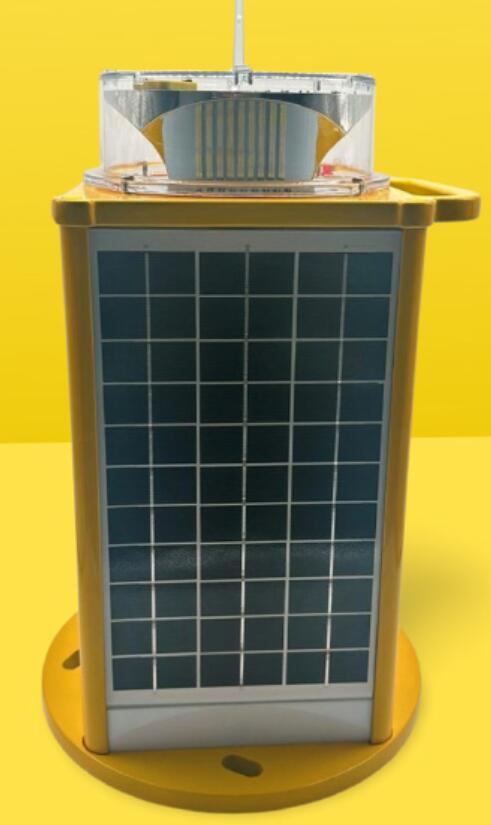Solar Powered Aviation Obstruction Lights: A Bright Solution for Safer Skies
Solar powered aviation obstruction lights are revolutionizing the way tall structures are marked for aviation safety. These innovative lighting systems harness solar energy to provide reliable, eco-friendly, and cost-effective illumination, ensuring that obstacles such as towers, wind turbines, and buildings remain visible to pilots, especially during nighttime or low-visibility conditions. As the aviation industry continues to prioritize sustainability and efficiency, solar powered aviation obstruction lights are emerging as a key solution for enhancing safety while reducing environmental impact. This article explores the significance, functionality, and advantages of these lights, as well as their role in the future of aviation.
The Need for Solar Powered Aviation Obstruction Lights
Tall structures pose a significant risk to aircraft, particularly during takeoff, landing, or low-altitude flights. To mitigate this risk, obstruction lights are installed on structures exceeding certain height thresholds, as mandated by aviation authorities like the Federal Aviation Administration (FAA) and the International Civil Aviation Organization (ICAO). These lights serve as visual markers, alerting pilots to potential obstacles and helping them navigate safely.
Traditional obstruction lights rely on grid electricity, which can be unreliable in remote areas or during power outages. Solar powered aviation obstruction lights address this limitation by using renewable solar energy, making them ideal for structures located in off-grid or hard-to-reach locations. Their self-sustaining nature ensures uninterrupted operation, even in the most challenging environments.

How Solar Powered Aviation Obstruction Lights Work
Solar powered aviation obstruction lights are equipped with photovoltaic (PV) panels that capture sunlight during the day and convert it into electrical energy. This energy is stored in high-capacity batteries, which power the lights at night or during periods of low visibility. The lights are typically LED-based, offering high brightness, low energy consumption, and a long lifespan.
Most solar powered aviation obstruction lights are designed with intelligent control systems that automatically adjust their intensity based on ambient light conditions. For example, they may emit brighter flashes during the day and dimmer light at night to conserve energy. Some advanced models also feature remote monitoring capabilities, allowing operators to track performance and diagnose issues in real-time.
| solar powered aviation obstruction light |
Advantages of Solar Powered Aviation Obstruction Lights
Sustainability: By harnessing solar energy, these lights reduce reliance on fossil fuels and lower carbon emissions. This aligns with the aviation industry's growing commitment to environmental responsibility.
Cost-Effectiveness: Solar powered aviation obstruction lights eliminate the need for expensive electrical infrastructure, such as wiring and transformers. They also have lower operational costs due to their energy-efficient design and minimal maintenance requirements.
| solar powered aviation obstruction lights |
Reliability: With built-in battery storage, solar powered aviation obstruction lights can operate continuously, even during power outages or adverse weather conditions. This ensures consistent visibility for pilots.
Versatility: These lights are suitable for a wide range of applications, from urban skyscrapers to remote wind farms. Their modular design allows for easy installation and scalability.
Compliance: Solar powered aviation obstruction lights meet international aviation safety standards, ensuring that structures are properly marked and visible to pilots.
Applications of Solar Powered Aviation Obstruction Lights
Solar powered aviation obstruction lights are used in various industries and settings, including:
Wind Energy: Wind turbines, often located in remote or offshore areas, rely on solar powered aviation obstruction lights to ensure visibility for low-flying aircraft.
Telecommunications: Communication towers, which are frequently tall and located in isolated regions, use these lights to comply with aviation regulations.
Construction: Temporary structures, such as cranes, can be equipped with portable solar powered aviation obstruction lights to enhance safety during construction projects.
Urban Infrastructure: Skyscrapers and bridges in densely populated areas use these lights to prevent collisions with helicopters and small aircraft.
Innovations in Solar Powered Aviation Obstruction Lights
Recent advancements in technology have further enhanced the performance and functionality of solar powered aviation obstruction lights. Some of the most notable innovations include:
Smart Lighting Systems: Modern solar powered aviation obstruction lights are equipped with sensors and microprocessors that optimize energy usage and adjust lighting patterns based on environmental conditions.
Hybrid Systems: Some models combine solar power with wind or grid electricity to ensure uninterrupted operation in areas with limited sunlight.
Durable Materials: The use of corrosion-resistant and weatherproof materials extends the lifespan of these lights, making them suitable for harsh environments.
Wireless Connectivity: Advanced systems feature wireless communication capabilities, enabling remote monitoring and control via smartphones or computers.
Challenges and Future Prospects
While solar powered aviation obstruction lights offer numerous benefits, they are not without challenges. One key issue is their dependence on sunlight, which can be inconsistent in certain regions or during prolonged periods of bad weather. To address this, manufacturers are developing hybrid systems and improving battery storage capacity.
Another challenge is the initial cost of installation, which can be higher than traditional lighting systems. However, the long-term savings in energy and maintenance costs often outweigh the upfront investment.
Looking ahead, the future of solar powered aviation obstruction lights is bright. As solar technology continues to advance, these lights will become even more efficient, affordable, and versatile. Their integration with other smart technologies, such as IoT-enabled sensors and AI-driven analytics, will further enhance their functionality and reliability.
Solar powered aviation obstruction lights represent a significant step forward in aviation safety and sustainability. By leveraging solar energy, these lights provide a reliable, eco-friendly, and cost-effective solution for marking tall structures and preventing collisions. As the aviation industry continues to evolve, solar powered aviation obstruction lights will play an increasingly important role in ensuring the safety of air travel while supporting global efforts to reduce environmental impact. In a world where innovation and sustainability go hand in hand, these lights are truly lighting the way to a safer and greener future.
